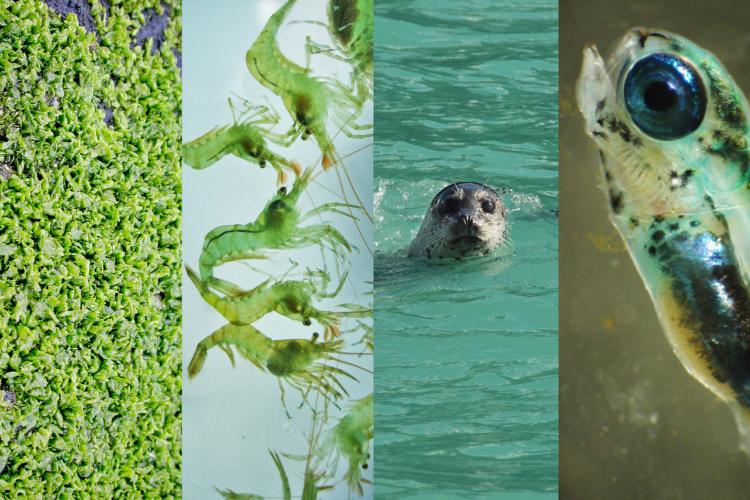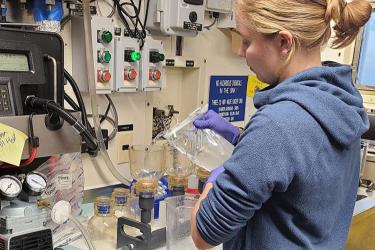Green Is Beautiful
The color green is often associated with a biochemical process called photosynthesis. Photosynthesis is a process by which energy from the sun is combined with nutrients to produce energy usable by life on earth. Alaska's coastline and ocean are full of nutrient rich waters and sea beds that capture this energy and produce beautiful greens.
Other sources of beautiful greens in Alaska's waters are chromatophores. Chromatophores are specialized cells that help animals of all shapes and sizes change color to match their environment. With lush greens in their aquatic environments, it's no wonder we also see incredible green sea creatures!
Glacial water can carry with it silt and other minerals built up over thousands of years. As sunlight hits water with different minerals dissolved within it, it reflects off of these mineral particles and creates the different colors we see. Sometimes, this includes incredible shades of green!
We hope you enjoy these spectacular images celebrating the color green provided by our scientists at Alaska Fisheries Science Center. Use these images as phone or computer backgrounds or where ever they may provide you with the inspiration and soothing verdant tones you need today.
Emerald Carpet Seaweed
These kelly green shrimp could quickly change color to match their background. This group was found in a seagrass bed in Sitka, Alaska, where the species was first described. The intertidal sitka shrimp is a favorite prey item for a wide range of marine life, including young fish. NOAA Fisheries looks at the nutritional value of prey like these shrimp to better understand the health and survival of their fish predators.
Harbor seals in Alaska can be found in diverse habitats, from sandy shoals to intertidal rocks to glacial ice. But it’s on ice that they are most abundant, numbering in the thousands near Alaska’s tidewater glaciers. Calved ice floes provide a floating platform where seals can haul out, warm up, and raise their pups. Life on ice calls for a unique set of adaptations for seals to make a living in this dynamic environment. NOAA Fisheries scientists monitor harbor seal populations and track their movements and behavior to better understand their ecology and habitat use. Our research also helps Alaska’s growing tour ship industry understand how to avoid disturbing ice-associated harbor seals in glacial fjords.
This greenling larva lives a very different life from its parents. Young fish often live in different habitats, eat different foods, and are vulnerable to different predators than adults of the same species. Some greenling species, like ling cod, grow up to be popular targets for commercial and recreational fishing. NOAA Fisheries scientists study how early life stages of fish respond to environmental change to better predict future changes in fish populations. Lingcod is a large greenling. Adult lingcod are caught recreationally from Southern California to the Gulf of Alaska.







